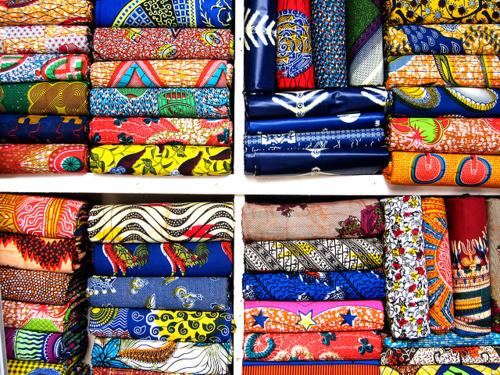
The Ankara Fabric
By Akinbola Esther
The Ankara fabric, originally known as the Dutch Wax Print, has been in existence for a long time. Initially, it was produced by the Dutch for the Indonesian textile market through a process called ‘Batik’.
Even though Ankara fabrics are associated with African culture, its origins are not authentically and wholly African. Dutch wax prints started out as mass-produced imitations of Indonesian batik fabric.
It was originally intended for the Indonesian market but found a more enthusiastic market in West Africa, where it became symbols of traditional and high quality fashion. From West Africa, this fabric spread to other parts of Africa and all over the world.
The Indonesians carried out batik by melting wax and making a pattern of it across a blank cloth.
Afterwards, the cloth is soaked in dye but the wax on the cloth prevents the dye from covering the whole cloth. Where more colours are needed, the wax-and-soak process is repeated with new patterns.
Dutch merchant Pieter Fentener Van Vlissingen, commercialised this method and as the market for the batik fabric grew, Scottish, English, and Swiss manufacturers, sauntered in. Soon enough, the Dutch wax prints became a part of African clothing with so much Africanness and indigenous ownership.

The wax fabric can be sorted into categories of quality due to the processes of manufacturing. The colors comply with the local preferences of the customers. Wax prints can be named after and inspired by personalities, cities, buildings, sayings, occasions or well-known individuals.
It is also a very versatile fabric and many items can be made from it such as hats, earrings, blazers, and shoes to name a few.
It is usually a colourful cloth and is primarily associated with Africa because of its tribal-like patterns and motifs. To make ankara an even more versatile fabric, fashion brands and fabric suppliers have manufactured ankara prints on fabrics like chiffon, silk, spandex for clothing such as kaftans, iro and bubas, bathing suits, sports bars, leggings & socks.
Ankara print fabrics are usually sold per yard, 6 yards or 12 yards. The fabric company, product and registration number is printed on the selvage of the fabric, to notify people of the quality and to protect the designs from imitators.
Ankara print fabrics can be worn for regular occasions, but many people consider it a formal fabric and wear it for special occasions.
Some people wear it as “asoebi” for special occasions such as birthdays, weddings, balls etc. Asoebi is a Nigerian word and means “clothes of the family”, Family members and relatives.

